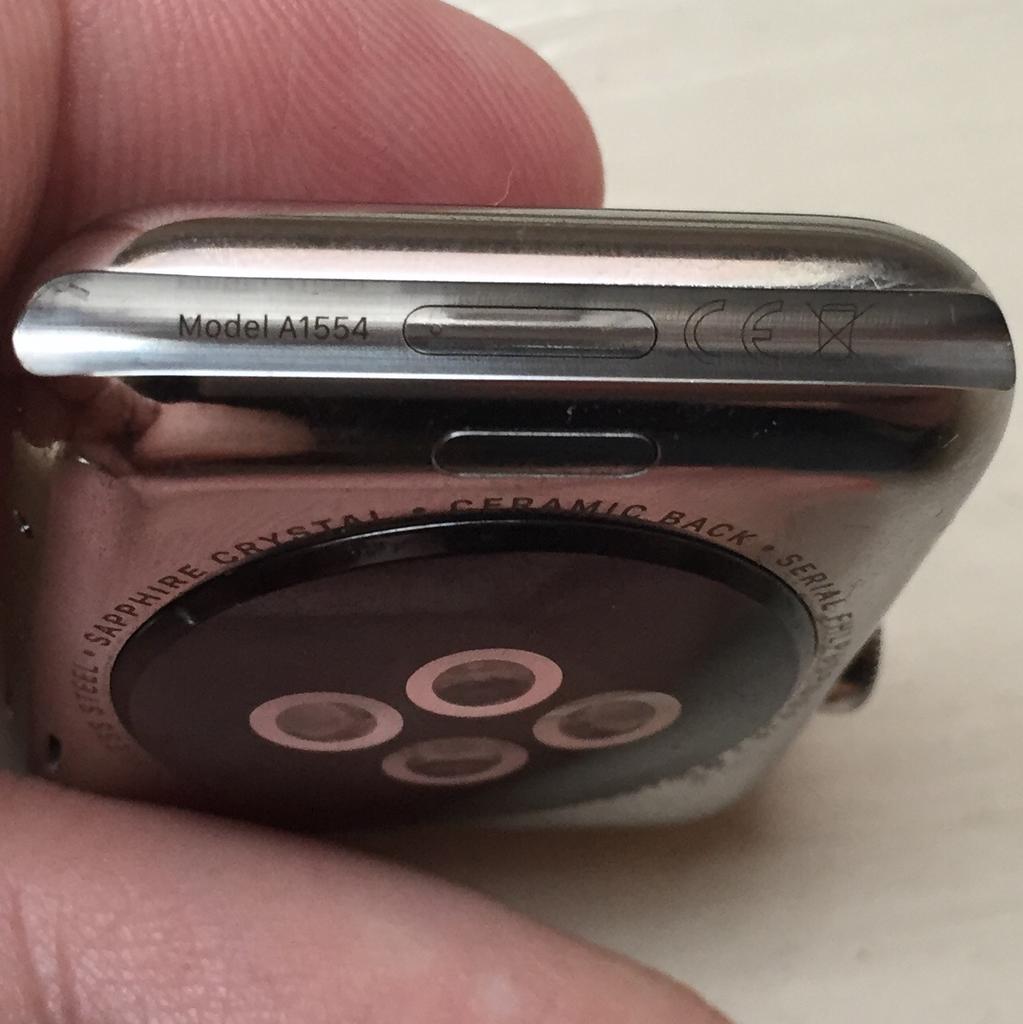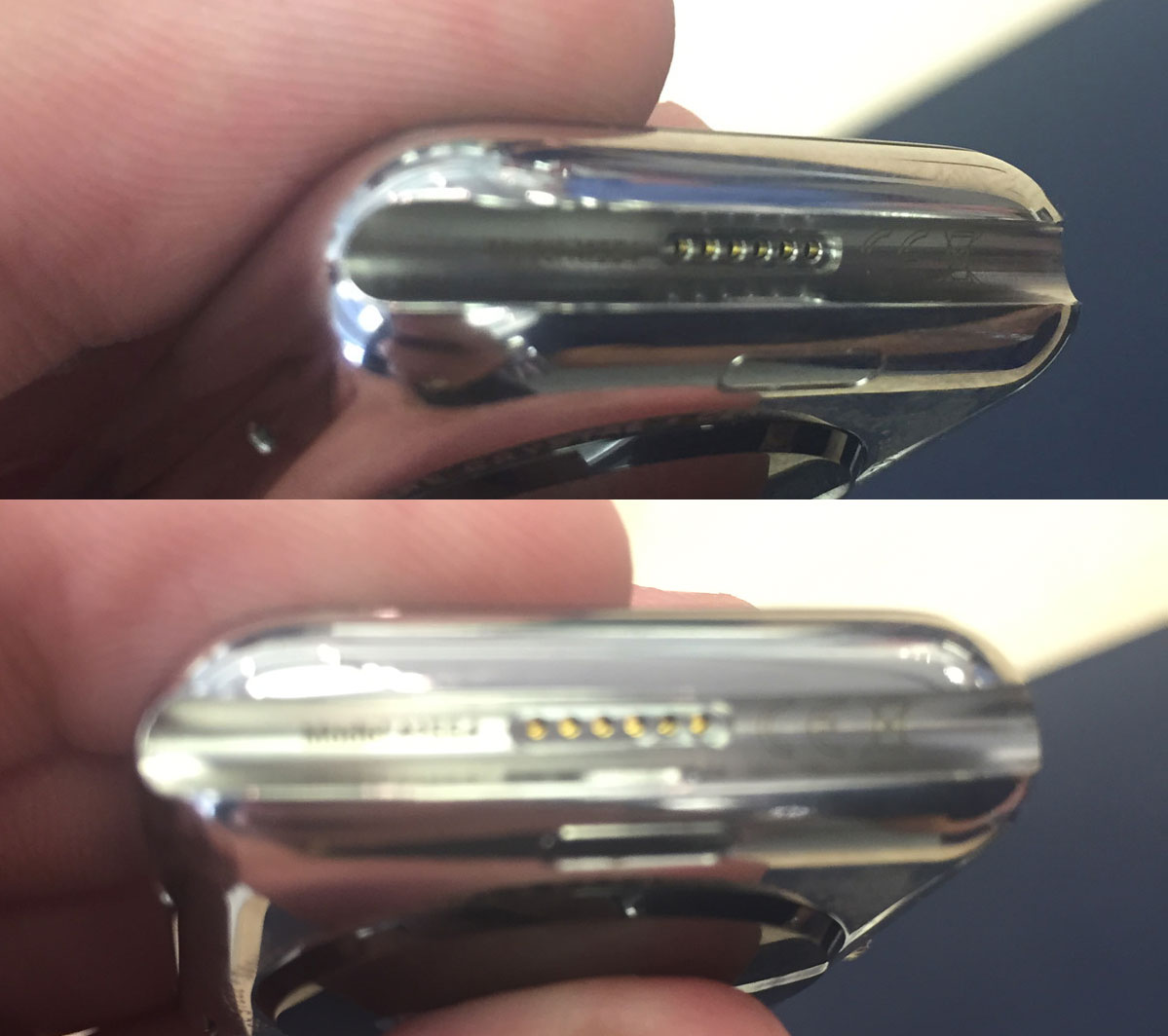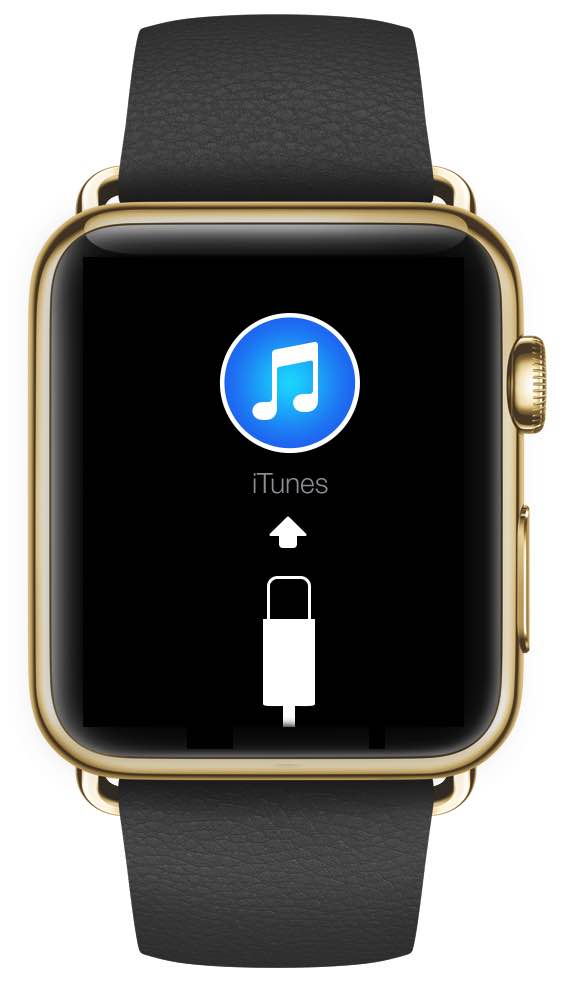Both review versions of the Watch Apple sent to journalists and demo units available in retail stores sport a hidden, undocumented port that Apple chose not to talk about publicly.
Resembling the Lightning connector on iPhones and iPads, it’s reportedly used for diagnostics and direct access to the Watch’s operating system, TechCrunch said in March. Slipping off the bottom strap connector slot of the Watch reveals the hidden port.
Based on social media postings and images Daring Fireball’s John Gruber shared last weekend, it’s basically a 6-dot brass contact array.
In this post, I’m going to lay down a few possible uses for the mysterious port and explain why I think it’s crucial that Watches that’ll be shipping into customers’ hands on April 24 come outfitted with it.
For starters, the port is “very similar” to Lightning I/O, which only uses six of its eight available pins, wrote TechCrunch.
The publication went on to speculate it could possibly open up the market for smart band accessories that would interface with the Watch itself. As you’ll recall, this is how the recently introduced Pebble Time smartwatch allows third-party bands to interact with its software and sensors.
9to5Mac, however, shot down the suggestion, reporting earlier this month that this is “actually a Lightning port being used for testing.” The publication reportedly learned from unnamed sources that it “will not be included on the product shipping to customers.”
But according to a MacRumors reader, in-store Watches have the port present though there’s no telling whether or not these units will be the same as those shipped to customers.
As I mentioned, the port is revealed by slipping off the bottom band.
For what it’s worth, Apple doesn’t acknowledge the port’s existence in any official documentation for users or developers. Moreover, MacRumors’ reader has confirmed that the retail staff had no training on the use of the port.
In my opinion, it’s likely used to install the Watch OS during manufacturing.
What we don’t know (yet) is if we’ll be allowed to restore the Watch software ourselves, which would require a cable connection with iTunes. As for the regular software updates, it’s not been confirmed yet whether Watch firmwares will delivered through the companion iPhone app.
Restoring the Watch to factory settings through desktop iTunes in case everything else fails makes sense to me. Though I’m just speculating here, it would be similar to the Apple TV restore process. As you know, Apple’s set-top box has a port on its back which lets your restore the device to factory settings in iTunes, using a micro-USB cable.
Even if Watch firmwares are delivered over-the-air, an interruption may occur during the software update process, which could potentially render the software useless.
Or, the Watch’s networking stack (Wi-Fi and Bluetooth) may stop working due to an unforeseen software glitch. On that note, memories of a botched firmware update bricking users’ iPhones are still fresh.
Other factors could also cause the Watch OS to break beyond repair. And as we all know, bricked devices must be restored to factory settings, which entails installing the latest software through iTunes.
This is why I think the Watch needs a hardware port.
And even if performing a reset of the Watch’s software will require visiting your Apple Store, Apple’s Geniuses are still going to need a way to connect a malfunctioned device to a computer in order to run diagnostics and apply factory firmware.
Last but not least, the port could potentially make a Watch jailbreak easier.
What’s the hidden port for, do you think?
By the way, if you look closely you’ll notice Apple snuck in the “Assembled in China – Designed by Apple in California” marking inside the other strap slot.
Source: John Gruber


